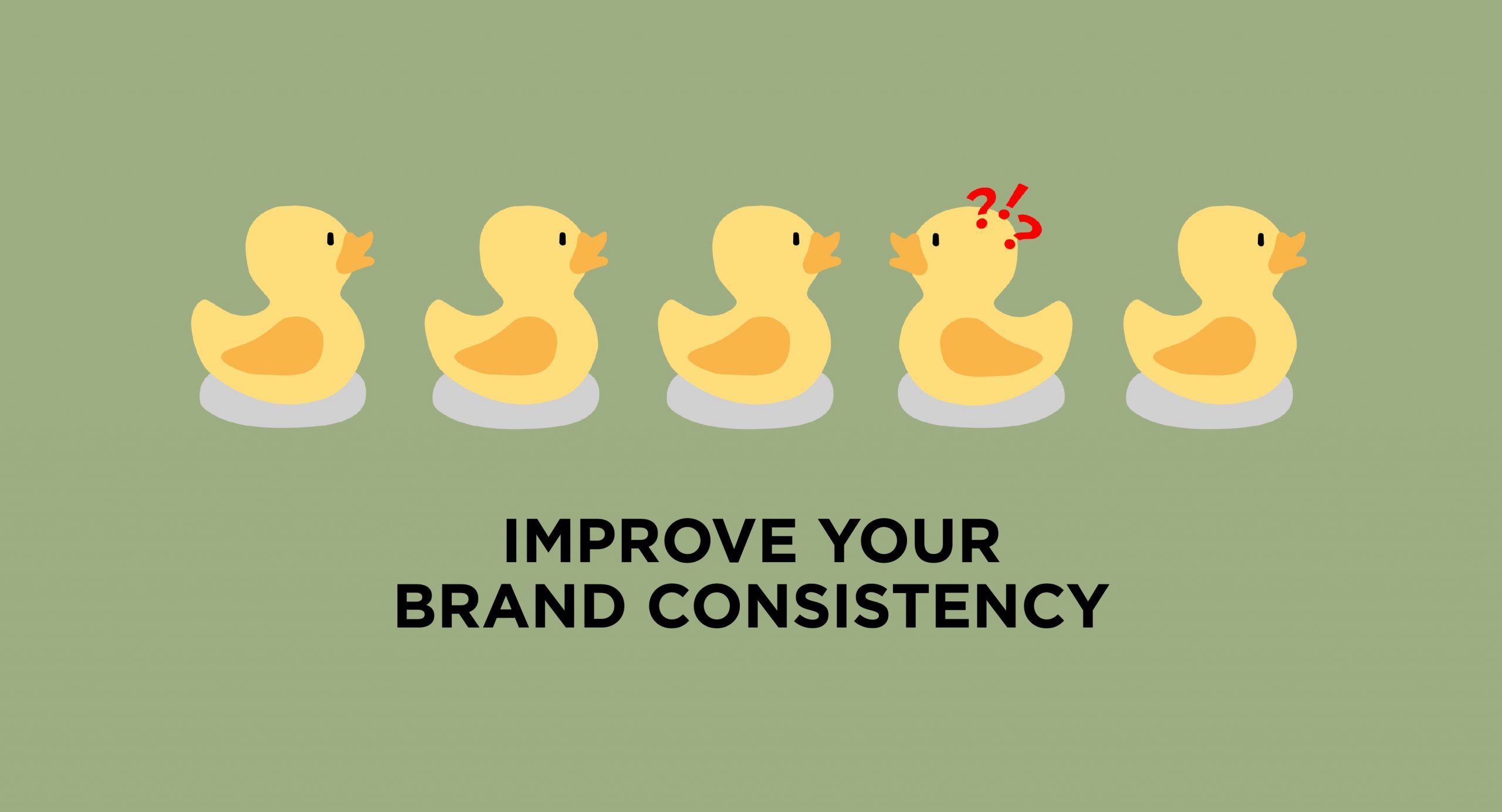BRANDING | POSTED ON 10.08.2020
How to build a great brand that’s aligned with your business
A well-built and managed brand is a significant asset for any business. It can have a drastic impact on the value of the company. To be truly effective, your brand must be aligned with your company’s goals and values.
So, why is it important? Let’s start with an example. With a car, if the tyres aren’t aligned properly, you aren’t going to reach your destination as quickly and efficiently as you could. Worst case scenario is that the car will crash. The same is true with companies and branding.
What is brand alignment?
Brand alignment is about considering if your messaging about what your company does matches your company’s actions. When a brand is adequately aligned, it creates a situation where all stakeholders, internally and externally, agree on the purpose of the company.
On the internal side, this means that everyone inside your company has a clear understanding of the values aims and core mission of the business. Everyone knows what promises you make to your customers and how you are going to keep them.
For your external stakeholders, they can look at your brand and know what you promise and offer. More importantly, they can believe those promises and act with the expectation that they will be fulfilled.
Essentially, you can boil brand alignment down to a straightforward question. Do you do what you tell your customer you will?

How do I know if my brand alignment is not on point?
There are a few easy ways to measure how well aligned your brand is;
1. Talk to your customers
If any of your customers express that they are confused or frustrated, then this can be a big red flag that you have a brand alignment problem. Customer confusion often arises from unclear messaging. It strongly indicates that there is a disconnect between what you say and what you do.
If a customer takes the time to express their confusion to you – Listen. The chances are that many other potential customers have experienced the same difficulty but have instead simply moved onto a competitor rather than invest the time to untangle their confusion.
2. Talk to your teams
Ask members from different teams across your company to describe what they believe your core services are. Then, compare their answers. If the answers are wide-ranging, then you have a brand alignment problem. You need to look at the tools you are giving to your teams to help them understand your company. If you are not all pulling for the same goal, then you can’t expect to get very far.
3. Look at your recruitment and retention
If you have difficulty recruiting and retaining talent, it can be an indicator that your company isn’t doing what it tells people it is. Exit interviews can provide an excellent opportunity to assess if this is a problem. Culture issues are the most common causes of high turnover and difficulty recruiting. So, if that sounds familiar, it could be a symptom of a brand problem.
4. Talk to your marketing manager
Your marketing team should be the clearest component of your brand alignment strategy. If your marketing manager struggles to correctly articulate how your brand is different from others in your field, then you have a problem.

How do I fix my brand alignment?
If you have the symptoms of a brand alignment problem, then you need to start by researching the exact scope of the problem. You need to get detailed feedback and information from as many sources as possible. This means your client-facing teams, your marketing and development teams, as well as current and former customers.
From all of these groups, you need to be asking questions. Ask about the promises your company makes, as well as the services and core mission.
Once you have all this information, you need to compare it. Look for the inconsistencies. It is only once you identify the problems and the patterns that you can alter them.
The next step is to make some decisions for your company. You need to make sure you have a clear idea of what your brand is, what your values are, and what your core mission is. Once you have this clearly and simply defined, you need to go about communicating it.
You need to communicate it internally to your teams. You can achieve this with the creation of brand guidelines, training and strong leadership. During this process, it can be a good time to actively show appreciation to your employees. The happier they feel, the better the relationship they will form with your brand, and that will show through in their performance and client interactions.
You then need to communicate externally. Every level of communication you have with your customers and client base should have the same core message embedded into it. Consistency with your core message is the best way to fix an alignment problem.
What is a core mission?
A core mission is a statement of what your business aims to achieve. It should define the impact you intend to have on the world, what you are going to do for your customers and how you are going to do that.
How do I create the core mission for my brand?
Creating your core mission first starts with your vision for your company. You need to start by considering what your long term goals are. Your core mission is going to arise from your vision. Think of your core vision as your long term goals while your core mission is how you are going to achieve those goals.
A good way to understand this is to look at an example;
LinkedIn has both a clear vision and mission which they communicate well through their social media channels.
LinkedIn’s vision – create economic opportunities for every professional in the world.
This is a big and long term aspiration. It is also at its heart simple, easy to understand and clear. This is the perfect starting point. Once LinkedIn has this vision, the next question was, how are we going to make this happen. This leads us to their mission.
LinkedIn’s mission – connect the world’s professionals to improve their productivity and success.
This mission gives a clear statement of how LinkedIn plans to achieve its vision.
Once you have your vision, you can then create your mission. You don’t have to be able to state it in a single sentence, the form and detail of it are up to you. Just try to answer these fundamental questions.
- Who do you serve?
- What makes you unique?
- What value or benefit are you promising to create?
Going back to LinkedIn, you can see from their mission statement that their answers are easy to find. They serve professionals. They are unique in that they are creating a professional network. The value they add is by increasing productivity and success. If you didn’t know what LinkedIn was before reading this core mission, then afterwards, you would have a good understanding of what they do.
Is brand alignment still relevant in 2020?
In a recent survey, 91% of consumers said that they would prefer to buy from an authentic brand. When you consider that an authentic brand is one that does what it says it will, then this is just another way of saying that customers want to buy from places with good brand alignment, they just don’t have the words to express that. So, if you want to attract the majority of customers, then brand alignment is absolutely relevant.
Another statistic that should be making you even more concerned about your brand alignment in 2020 is that only 55% of marketers believe that their company’s internal culture is aligned with its external brand values.
The same study showed that less than half of the marketers served felt that their leadership teams and corporate communicates spoke about the brand with a single unified voice. This suggests that around 50% of companies already have a brand alignment issue, or that they have the makings of problems in the future.
Related questions
Considering brand alignment and its role in your company’s plans can also raise some other related questions. Here are some things you may also want to make sure you understand when you begin to tackle your brand’s alignment.
What is a brand positioning strategy?
A brand positioning strategy is all about identifying who your customer is and what you want them to think of your brand. It is often talked about as positioning your brand in your customers’ minds. The strategy is based on the creation of positioning statements. These are used internally to shape and drive your branding and marketing strategy.
These statements outline who your target customer is, what your market area is, what your unique brand promise is and the reason your customers should believe in you. For example, back when Amazon was just a bookseller, their positioning statement was as follows:
“For World Wide Web users who enjoy books, Amazon.com is a retail bookseller that provides instant access to over 1.1 million books. Unlike traditional book retailers, Amazon.com provides a combination of extraordinary convenience, low prices, and comprehensive selection.”
This is a great example of brand positioning, and Amazon’s current success suggests it is an excellent example to emulate.
What is a brand image?
Brand image is the picture and feeling that your brand creates in the minds of your customers. It is a combination of their perceptions of your values, goals and mission. It is usually formed by a combination of things. This could be the interactions your customers have with you, your marketing as well as how you are presented in the media and by your competitors.
Do you need help with your brand alignment?
Our branding experts Liquid Creativity are here to help with all aspects of ensuring your brand is consistent, aligned and effective. Whether it needs a careful tweak or a total rebrand; we’re here to make the difference you want to see. Find out more by getting in touch to arrange your free consultation.














